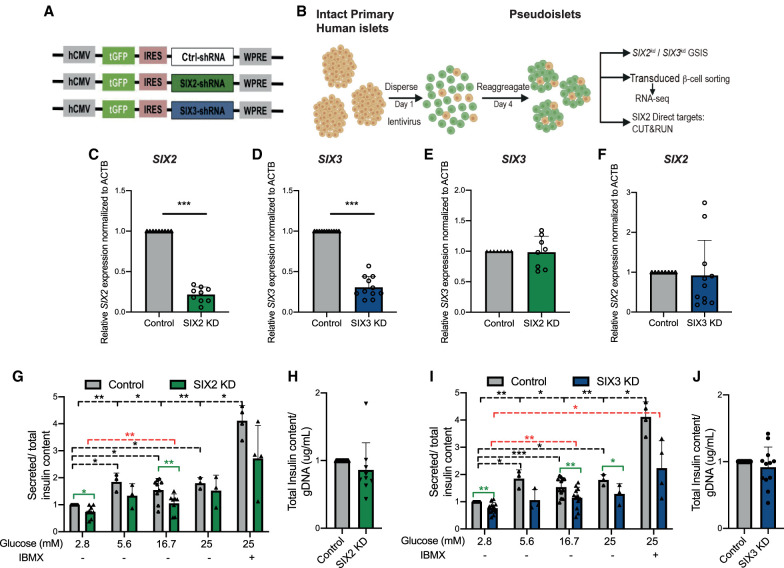Figure 1.
shRNA-mediated suppression of SIX2 and SIX3 in primary human islets results in impaired glucose-stimulated insulin secretion. (A) Schematics of the lentiviral constructs coding for a short hairpin RNA (shRNA) and GFP. (B) Schematic detailing the pseudoislet technique. (C) SIX2 mRNA expression in primary human islets. (Gray bar) Control, (green bar) SIX2kd. n = 9 independent donor repetitions. (D) SIX3 mRNA expression in primary human islets. (Gray bar) Control, (blue bar) SIX3kd. n = 11 independent donor repetitions. SIX3 mRNA were not altered by SIX2kd (n = 8 independent donor repetitions) (E), and SIX2 mRNA levels were not affected by SIX3kd (n = 11 independent donor repetitions) (F). (G,I) In vitro glucose-stimulated insulin secretion from human pseudoislets control, SIX2kd (n = 9 independent donor repetitions) (G), or SIX3kd (n = 12 independent donor repetitions) (I). Secreted insulin normalized to insulin content. (Black lines) Significant differences within the control, (red lines) significant differences within the KD groups, (green lines) significant differences between control and KD conditions. (H,J) Total insulin from human pseudoislets after transduction with SIX2kd (n = 9 independent donor repetitions) (H) or SIX3kd (n = 12 independent donor repetitions) (J). Data presented as mean; error bars represent the standard error. Two-tailed t-tests used to generate P-values: (*) P < 0.05, (**) P < 0.01, (***) P < 0.0001.

